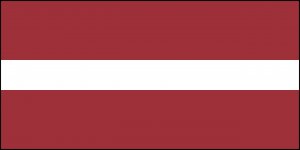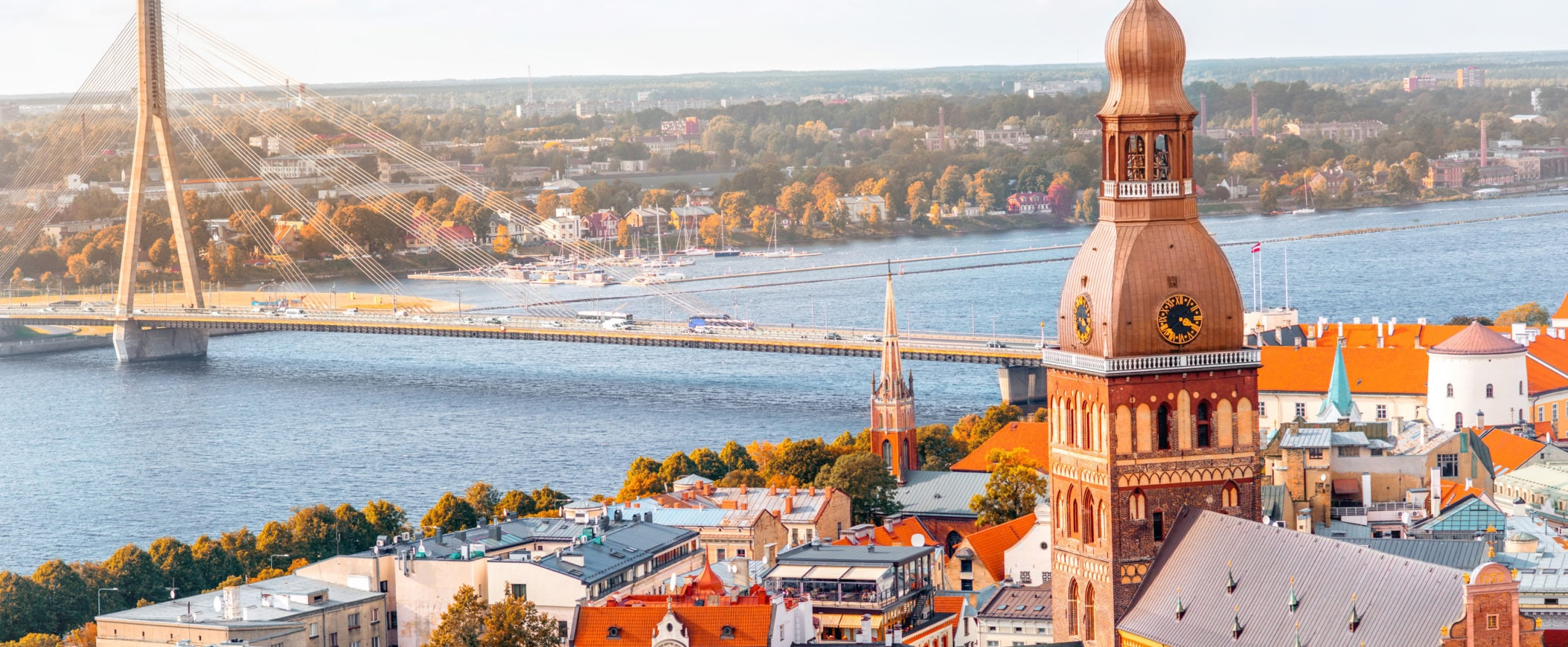Language/Standard-latvian/Culture/Latvia-Timeline
< Language | Standard-latvian | Culture
Jump to navigation
Jump to search
Rate this lesson:
Historical Timeline for Latvia - A chronology of key events
Latvia Timeline[edit | edit source]
Like their Lithuanian neighbors, the Latvians are the descendants of Indo-European Baltic-speaking peoples who settled in the region around 2500 BC. J.-C. The Lives, a Finno-Ugric people (whose language is close to Estonian), settled on the coasts surrounding the Gulf of Rīga. They are only a hundred survivors today.
| Date | Event |
|---|---|
| 12th century | it is the arrival in the region of the Germanic Knights, in search of a base for their trade with Russia. The pagan Lives and Latvian tribes will be forcibly evangelized. |
| 1201 | foundation of the town of Rīga, around its castle, by Bishop Albert of Bremen. |
| 1202 | creation of the order of the Porte-Glaive knights, supported by Pope Innocent III. The last resistance of the Latvian tribes was crushed in 1290. The conquerors gave the name of Livonia to the region and fought for its control for two centuries. |
| 1522 | the Protestant Reformation is introduced by the Germanic priests. |
| 17th century | the war between Sweden and Poland results in the region being divided between the two powers. The provinces of Zemgale and Courland are integrated into the Polish-Lithuanian Empire (it is the flourishing period of the Duchy of Courland, its maritime conqu |
| From 1700 | the Russians invest the region and take Livonia back from the Swedes. In 1795, the whole country was in their hands, until the 20th century. Rīga becomes the third industrial city of Tsarist Russia, after Moscow and Saint Petersburg. |
| 19th century | after the peasant revolts at the beginning of the 19th century, intellectuals in the second half of the century put forward the Latvian national identity in the press and through folklore. Barons and Valdemaras are emblematic figures. |
| 1905 | the Russian revolution strongly shakes Latvia where the urban proletariat is very important. Strikes and demonstrations are crushed in blood by the Tsarist troops. |
| 1914 | Latvian soldiers fight in the ranks of Tsarist Russia against the Germans. |
| 1915 | Germany occupies Latvia and takes Rīga after the Russian withdrawal in September 1917 (revolution). |
| 1918 | the Latvian nationalists take advantage of the German defeat to declare their independence. For two years, the troops of the young republic repelled the assaults of the last German Frankish corps and the Bolsheviks. |
| 1920 | recognition of the independence of Latvia by Moscow. |
| 1921 | in January, the independence of Latvia is recognized by the international community, thanks to the intervention of Aristide Briand. |
| Until 1939 | Latvia experienced a period of independence. The country is developing, the land is redistributed to the peasants. |
| 1934 | after a coup, Ulmanis establishes a dictatorship. |
| 1939 | Latvia is a victim of the German-Soviet pact and the partition of Eastern Europe. It falls into the hands of the USSR. The invasion by Soviet troops followed and the deportations. |
| 1941 | Hitler launches his offensive against the Soviets and occupies Latvia. Some see these Germans as "liberators", but the illusion is fleeting. The Nazis exterminate 90% of Latvia's Jews, persecute the population and forcefully recruit young people. |
| 1944 | in the wake of the German defeat, the USSR regains possession of Latvia. Thousands of Latvians fled, others took to the bush and tried to resist the Soviets. Stalin increases the deportations of Latvians in Siberia; the communist regime is established and |
| 1988 | after the protests of environmental groups against Soviet projects and the public denunciations of writers against the Molotov-Ribbentrop pact of 1939, the independence movement gained momentum. In October, protests take place in Rīga. A Popular Front is |
| 1989 | in August, the Latvians take part in an incredible human chain linking the three Baltic states of Vilnius to Tallinn. |
| 1990 | in May, the Supreme Council restores independence. |
| 1991 | in January, Soviet troops storm the building of the Ministry of the Interior in Rīga. Five people are killed and many more injured. After the failed coup d'état in Moscow, the USSR collapsed. The local Communist Party is banned. In September, Latvia's ind |
| 1993 | the lats, the national currency, is reintroduced to replace the transitory Latvian ruble. In June, a coalition of the center-right and the peasant party won the elections. Guntis Ulmanis is elected president. |
| 1994 | in August, departure of Soviet troops. |
| 1995 | the legislative elections see the rise of two parties, one made up of former executives of the previous regime (the Saimnieks), the other with a nationalist tendency (the People's Movement for Latvia). A very broad coalition government is appointed under |
| 1996 | Ulmanis is re-elected president. |
| 1997 | the social-democratic left regains the advantage over its adversaries and wins the local elections. |
| 1999 | on June 17, Vaira Vīķe-Freiberga, a Canado-Latvian is elected President of the Latvian Republic, a historic first in Europe. |
| 2001 | from August 17 to 19, more than a million people celebrate the 800th anniversary of the founding of the city of Rīga. |
| 2002 | in October, with several other candidates, Latvia is invited to join the European Union on condition of carrying out certain reforms. |
| 2004 | Latvia joins NATO and becomes a member of the European Union. In June, Latvians elect their first 9 MEPs. |
| 2005 | the lats is aligned with the euro with a view to the adoption of the single currency scheduled for January 2012. Latvia's entry into the European Exchange Rate Mechanism bis (ERM II) and ratification of the European Constitution by the Saiema ( the Latvia |
| 2006 | rejection of entry into the euro, postponed to 2010, but envisaged for 2012. |
| 2007 | election of the new President of the Republic, Valdis Zatlers. Entry into the Schengen area. |
| 2008-2009 | Latvia is seriously affected by the economic crisis (-18% growth in 2009) which plunges the country into dependence on the IMF. The entry into the euro is postponed until 2014. The government is dismissed in March 2009, Zatlers calls the economist Dombrov |
| 2010 | Legislative elections won by the center-right coalition led by Dombrovskis in November. The drastic austerity policy continues. |
| 2011 | Early dissolution of parliament (following the victory of the referendum initiated by Zatlers asking for it). The Dombrovskis coalition narrowly wins the majority and constitutes a third government. The assembly elects Andris Bērziņš as President of the R |
| 2012 | Despite a turbulent political life, the economy seems to be healthy and growth continues (4%). Latvia is preparing to join the euro and Rīga to become European Capital of Culture in 2014. |
Source[edit | edit source]
World Timelines[edit source]


